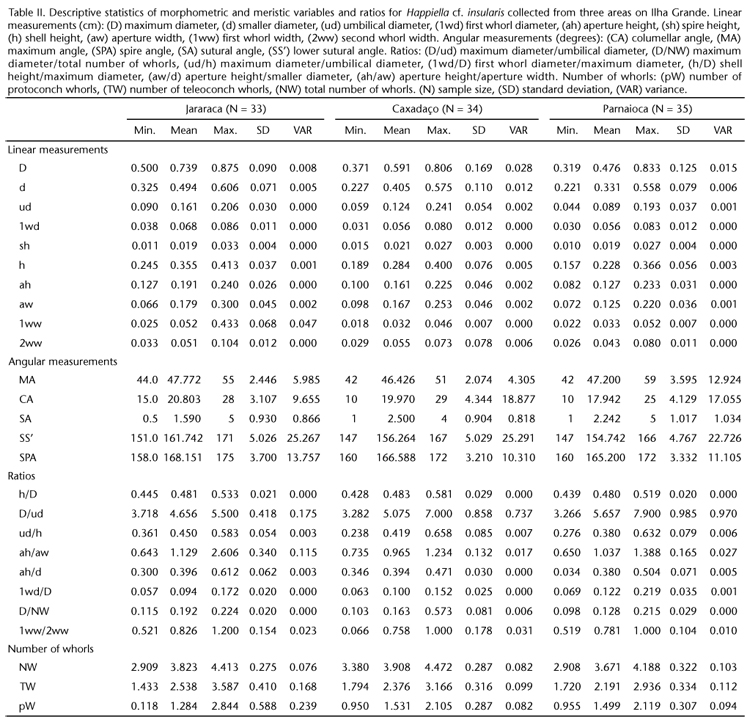We conducted a study on shell morphology variation among three populations of Happiella cf. insularis (Boëttger, 1889) inhabiting different areas (Jararaca, Caxadaço, and Parnaioca trails) at Vila Dois Rios, Ilha Grande, Angra dos Reis, state of Rio de Janeiro, Brazil. Linear and angular measurements, shell indices representing shell shape, and whorl counts were obtained from images drawn using a stereomicroscope coupled with a camera lucida. The statistical analysis based on ANOVA (followed by Bonferroni's test), Pearson's correlation matrix, and discriminant analysis enabled discrimination among the populations studied. The variable that most contributed to discriminate among groups was shell height. Mean shell height was greatest for specimens collected from Jararaca, probably reflecting the better conservation status of that area. Good conservation is associated with enhanced shell growth. Mean measurements were smallest for specimens from Parnaioca, the most disturbed area surveyed. Mean aperture height was smallest for specimens from Parnaioca, which may represent a strategy to prevent excessive water loss. Discriminant analysis revealed that the snails from Jararaca differ the most from snails collected in the two other areas, reflecting the different conservation status of these areas: shells reach larger sizes in the localities where the humidity is higher. The similarities in shell morphology were greater between areas that are more similar environmentally (Caxadaço and Parnaioca), suggesting that conchological differences may correspond to adaptations to the environment.
Conchology; discriminant analysis; ecology; morphometry; threatened biome







